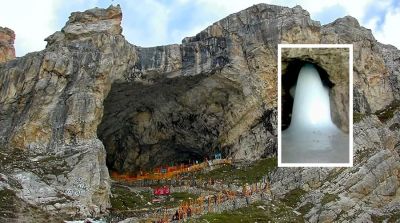Unearthing Pahalgam's Rich Tradition of Rug Weaving
Unearthing Pahalgam's Rich Tradition of Rug Weaving
Welcome to Pahalgam, a picturesque town nestled in the beautiful Jammu and Kashmir region of India. While Pahalgam is famous for its stunning natural beauty and adventure activities like trekking and skiing, it is also home to a lesser-known but rich tradition of rug weaving. In this blog post, we will dive deep into the world of Pahalgam's rug weaving and explore the artistry and craftsmanship that goes into creating these beautiful masterpieces.
The History of Rug Weaving in Pahalgam
The art of rug weaving has been practiced in Pahalgam for centuries, with a history that dates back to the Persian era. It is believed that Persian weavers brought their skills and knowledge to the region, laying the foundation for the fine craftsmanship that we see today. Over the years, the art form has been passed down through generations, with weavers mastering the intricate techniques and patterns that make Pahalgam rugs unique.
Pahalgam's rug weaving industry flourished during the Mughal period when the rulers patronized the art and encouraged local weavers to produce exquisite rugs for their palaces and court. These rugs, known for their intricate designs, vibrant colors, and luxurious feel, soon gained recognition and became popular with nobles and aristocrats across the region.
The Weaving Process
The process of rug weaving in Pahalgam is a labor-intensive and time-consuming task that requires immense skill and patience. It starts with the sourcing of high-quality wool, usually gathered from the sheep reared in the surrounding mountains. The wool is then meticulously cleaned, carded, and spun into yarn. Natural dyes derived from plants, roots, and minerals are used to create the vibrant colors seen in Pahalgam rugs.
Once the yarn is ready, the weavers set up a loom and begin the weaving process. The intricate patterns and designs are created by interlacing the colored yarns precisely. The weavers use a combination of traditional handlooms and wooden shuttles to carefully craft each rug, paying attention to every minute detail. The process can take several months to complete, depending on the size and complexity of the rug.
The Unique Features of Pahalgam Rugs
Pahalgam rugs are known for their unique features, setting them apart from rugs found in other regions. One distinguishing characteristic is the use of Persian and Mughal designs that have been adapted and localized over the years. The designs often depict geometric patterns, floral motifs, and intricate borders that add an aesthetic appeal to the rug.
The use of vibrant colors is another hallmark of Pahalgam rugs. The natural dyes used in the process lend a rich and timeless quality to the rugs, with hues ranging from deep reds and blues to earthy ochres and greens. These colors not only enhance the visual appeal of the rugs but also symbolize the connection with nature and the region's landscape.
Preserving the Tradition
While the art of rug weaving in Pahalgam has been passed down through generations, it faces challenges in the modern world. The rise of machine-made rugs and a decline in demand for handmade crafts pose a threat to this traditional art form. However, efforts are being made to preserve the tradition by providing training and support to the younger generation of weavers.
Organizations and local artisans are working together to create awareness about Pahalgam rugs and their significance. They are collaborating with designers and retailers to showcase these exquisite creations in international markets and ensure a sustainable livelihood for the weavers. By promoting the beauty and craftsmanship of Pahalgam rugs, they hope to keep this ancient art form alive and thriving.
The Beauty of Pahalgam Rugs
There is an undeniable beauty in Pahalgam rugs that goes beyond their visual appeal. Each rug tells a story of craftsmanship, tradition, and culture. The intricate patterns and vibrant colors are a testament to the skilled hands and creative minds of the weavers. Owning a Pahalgam rug is like owning a piece of history, a cherished heirloom that can be handed down through generations.
Conclusion
Pahalgam's rich tradition of rug weaving is a hidden gem waiting to be discovered. Behind every meticulously crafted rug lies a story of artistry, culture, and heritage. By supporting the artisans and appreciating their craftsmanship, we can help preserve this ancient tradition for future generations to experience and enjoy.
So, the next time you visit Pahalgam, don't forget to explore the world of rug weaving and bring home a piece of this timeless art form.
Remember to share this blog post with your fellow travel enthusiasts who appreciate the beauty of traditional craftsmanship!
Disclaimer : The information provided in this blog is for general informational purposes only. While we strive to keep the content accurate and updated, TravelSetu assumes no liability for errors or omissions. If you believe any part of this blog infringes your rights or causes concern, please notify us immediately at info[at]travelsetu[dot]com so that appropriate action can be taken.

















